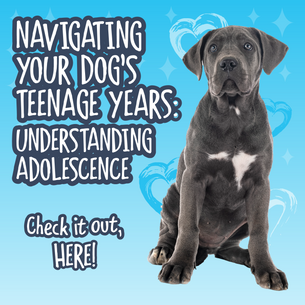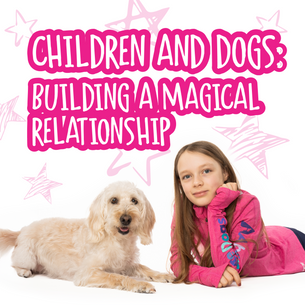Visiting the vet can be stressful for both you and your dog. There is so much going on in the environment and so many potentially negative experiences waiting to happen. For your dog, the vet clinic is full of novel sounds and smells, other animals and their owners, and anticipated outcomes can often be scarier than reality.
How can you prepare yourself and your dog for Vet Visit Success, whether that be regular check-ups, routine procedures or even emergency events that may occur?
Sometimes, the experience your dog has at the vet is what it is. You can’t always control every variable. However, you can still prepare your dog for almost anything a vet visit might throw at them and set them up for success. Who knows, they may even have some fun and positive experiences along the way, and that’s always a good thing, right?
Did you know that you can begin preparing your dog for vet visits in the comfort of your own home?
Not only can you equip them for stress-free vet visits by working on general handling, nail handling for nail trims and even more specific handling for things like vaccinations, you can also prepare them by growing concepts and playing games that will help safeguard your dog’s emotional state when they do eventually have to visit the vet.
Are you ready to help make vet visits a fun experience for your dog? Let’s dive in!
MAKE VET VISITS STRESS-FREE WITH THE WAITING GAME!
The waiting area. It’s essentially a powder keg of novelty, ambiguous situations and unpredictability for your canine companion – even more so if they are an anxious dog.
Transforming your dog’s experience with the vet waiting room is one area that can really turn what might be a stressful consult or Nightmare Vet Visit into fairly stress-free event!
When you arrive at the vet, inevitably there are going to be a lot of people and animals waiting in the waiting room, from cats and dogs, to birds, reptiles, children, parents, vets, vet nurses - you name it and it’s probably going to be there! This can be quite a stressful environment for your dog - even if they don’t already have a negative association with the vet, it's still a stressful place to be.
How about, instead of gritting your teeth and putting both yourself and your dog into that situation, you actually just let your vet know you have arrived (either by popping in or giving them a quick call)?
Then all you’re going to do is hang around outside in the car park and wait until they call you in for your consult. Simple, right?!
Waiting in the car park means you can either get your dog moving, play some confidence, optimism and relationship-building games or, if your dog is a little worried by the outside world or not feeling well, you can simply chill out with them in the car while you wait for your vet to call you.
This is going to mean your dog’s bucket (and probably your own) is emptier and you’re both going into the visit with less stress and a clearer mind, which means anything that might happen in the vet practice is not going to feel too overwhelming.
PREDICTORS ARE POWERFUL FOR STRESS-FREE VET VISITS!
The main goal of any vet visit is to try and make it as stress-free as possible. One thing to be aware of is that there are some things the vet might need to do for your dog, such as injections, nail clipping, checking their temperature or examining them because they’re sore, which might be uncomfortable or painful.
Aim to manage what your dog learns from the situation they are in and the associations they are making. Dogs are creatures of prediction. They are always trying to figure out what’s going to cause them discomfort, what might be causing danger and what might cause pain.
The absolute last thing you want your dog to learn at the vet is an association that they might apply in other areas of their life.
You need to Ditch the Routine. You want to make sure your dog doesn't start to predict that a person approaching them or reaching down towards them is the thing that is going to cause them pain.
Instead, if your vet is going to do something that is going to be uncomfortable or painful, make sure any associations your dog might make with that experience don't commonly occur in other aspects of their life.
For example, if you have your dog hop up on the table in the exam room, they're going to learn to associate discomfort or painful experiences with being on the table. If you have a large dog and the table isn’t an option, using something like an obvious visual can help - maybe a traffic cone or a specific mat or towel to sit them on.
Basically, whether you use the table or another specific item that only comes out when these uncomfortable or painful things might be happening, that table or item becomes the predictor and that is the thing your dog is going to worry about - rather than potentially learning the predictor is the vet, you or anything else in the general environment. This is important for all dogs, but can be especially helpful for anxious or reactive dogs.
PREPARATION IS KEY FOR STRESS-FREE VET VISITS!
How your dog responds in any situation at the vet - or in life - is going to come down to all the preparation that you’ve done with them for the situation. Remember, train (and prepare) FOR the situation, not IN the situation.
The first thing you want to do when aiming for Stress Free Vet Visits is get your dog used to being handled by you, long before you include anybody else in the picture. You want to make this a rewarding, positive experience.
This can be as simple and straight forward as gently touching your dog and feeding, lifting a paw and feeding, stroking their back or neck and feeding. In this way, you're creating a positive association with being handled. You can do this at home in short, fun, low pressure sessions. Rewarding away from you by tossing pieces of food for your dog to chase across the floor provides them with a a pressure release and the option to decide if they want to come back and re-engage with the experience.
This is really useful information for you, especially if you have an anxious dog. If they choose not to come back, you know they weren’t all that comfortable with the handling experience. Next time, take a step back, take the pressure off a bit and make it a little easier for them.
If your dog does well with initial handling and bounces back to you after being rewarded away, you can get a bit more specific about the handling you are doing. Start examining their nails, and feeding, or take a look at their ears, and feed them. You can even begin picking up their scruff and work up to giving them gentle prods and pokes to mimic the general sensation of being given an injection, and feed, feed, feed!
The key here is that you are working within your dog’s tolerance and within their level of joy - you want this to be a fun experience where they can be chilled, relaxed and take the majority of it in their stride.
STRESS-FREE VET VISITS ARE A NON-EVENT!
One super important thing that it can be easy to overlook is making sure you don’t just take your dog to the vet for appointments or when something is wrong.
If you only ever take your dog to the vet when they are feeling ill, need injections or are in pain, that’s going to create a negative association with the vet because your dog is only going to pair vet visits with really bad outcomes!
There is massive value in taking them to visit the vet and making it a positive, non-event situation. Make it a fun outing! Visit your vet regularly, play some games in the car park or pop inside when it’s quiet and play some games in the waiting room. Hop them upon the scales and play some Boundary Games.
Whatever you do during these fun visits is going to really help safeguard your dog’s emotional state in that vet visit situation, so when they need that vet care the most, it can be as stress-free as possible.
HELP MAKE VET VISITS STRESS-FREE WITH SOME MUZZLE MAGIC!
Regardless of whether your dog is good with the vet and other people at the moment - or not - it is absolutely vital that you condition a muzzle, not just for the safety of the vet, nurses and those around you, but also for your dog.
Believe it or not, muzzle training can benefit your dog in so many ways, even if you may not realise your dog might need it! There are even countries that require your dog to wear a muzzle for veterinary examinations in the case of an injury or accident. It’s better to be prepared, just in case!
No matter whether your dog is anxious, reactive or cool as a cucumber in most situations, you never know when they might need to be muzzled – especially at the vet – so preparing them in advance to love a muzzle and be completely comfortable wearing one will really set them up for successful, positive experiences down the track.
So we’ve got a super video for you on How to Prepare Your Dog for Muzzle Training! It’s an absolute must for all pet parents – and it’s super fun to teach too!
IS SEDATING YOUR DOG THE ANSWER FOR STRESS-FREE VET VISITS?
This is a very common question a lot of pet parents ask – especially if they have a dog who is anxious or scared of going to the vet,
Preparing your dog for vet visits, whether that be handling, the vet practice itself or being around other people can be incredibly useful in minimising stress for both you and your dog. It is so important because often the experience of being at the vet is already stressful enough.
It’s also especially important because it can help reduce or even remove the need for sedation when your dog struggles with even the simplest of check-ups or visits to the vet.
Of course, there will be times when your dog goes to the vet and sedation is necessary. There will be routine or emergency procedures that require sedation or your vet may ask to sedate your dog to help them in the treatment process.
However, with all the tips, tricks, hacks and strategies at your disposal, you have the power to not only prevent unnecessary sedation in situations where a dog wouldn’t normally need to be sedated just to see the vet or have a general check-up, but you actually have the tools and the skills to empower yourself and your dog for successful, stress and sedative-free vet visits!
HOW CAN YOU HELP YOUR DOG IN AN EMERGENCY?
The last thing you want to think about if your dog is injured is how they will react at the vet clinic. The situation will be somewhat chaotic and stressful for both you and your dog during an emergency.
Your dog may experience pain, which fills their bucket and can cause behaviours that may be out of character. Depending on the injury, areas of your dog’s body may be acutely sensitive to pain and, if touched, will cause your dog to snap and even bite you. Be aware of this. It’s not personal!
This is where your preparations will benefit both your own and your dog’s safety.
Knowing what to do and how to handle your dog in an emergency situation is absolutely vital and can even help save their life. Empowering yourself with some basic Canine First Aid knowledge is one way you can prepare yourself for emergencies.
Whatever the struggle, know that there’s a strategy, a solution and a game for that! Make your future vet visits less stressful starting today by implementing these top tips and preparing your dog so you can set them up for success. We know you’ve got this!
Want to dive into even more learning? You can find more top tips, tricks and hacks to help you and your dog along your journey to stress-free vet visits right here:
🔗 The First Vet Visit – The Sexier than a Squirrel Podcast
🔗 Surgery Success – The Sexier than a Squirrel Podcast
🔗 The FREE Calm eBook🔗 The FREE Top 5 Tips for Helping Your Reactive Dog eBook




